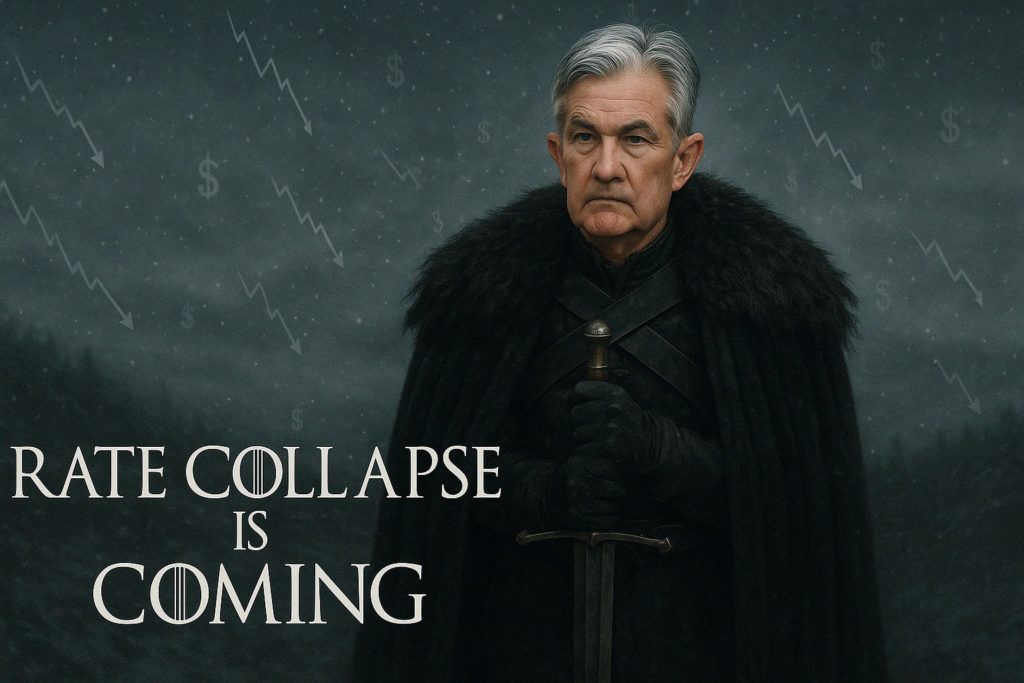Mortgage rates have surged dramatically in recent years, causing widespread concerns about affordability and economic stability. However, underlying economic factors suggest this elevated rate environment cannot persist. This analysis explores why a sharp reversal in mortgage rates is not only likely but inevitable before 2026. Key indicators—from unsustainable debt refinancing pressures to fragile market liquidity—point toward an imminent and substantial rate decline.
1. $9 Trillion Debt Rollover = Sovereign Duration Shock
The U.S. Treasury faces the daunting task of refinancing roughly $9 trillion in maturing short-duration debt at significantly elevated interest rates. This scenario exacerbates interest expense growth, potentially driving the U.S. toward a state of quasi-fiscal dominance. Unless interest rates decline sharply, the escalating interest burden could ignite fears of fiscal insolvency.
Implications for Markets:
- Forced Policy Pivot: The Federal Reserve may intervene aggressively with Yield Curve Control (YCC) or outright quantitative easing (QE) to manage duration and stabilize yields.
- Liquidity Event: Alternatively, a severe market dislocation, similar to March 2020 or the 2022 U.K. pension crisis, could trigger a mass sell-off in risk assets, prompting bond yields to collapse.
2. Fragile Market Plumbing Already Cracking
Current indicators suggest emerging stress in market liquidity and macroeconomic stability:
- Recent month-on-month deflation.
- Tightening credit conditions.
- Violent steepening of the 10Y-2Y yield curve following the latest CPI release.
- Collapsed swap spreads and significantly reduced market liquidity.
- Dramatically reduced mortgage demand despite resilient home prices.
These conditions echo classic signals preceding significant economic disruptions, with signs of macro liquidity and collateral stress clearly evident.
3. Historical Precedents Align
Past events offer instructive parallels:
- 2008: Fed tightening precipitated credit collapse (Bear Stearns, Lehman Brothers), followed by sharply declining mortgage rates.
- 2019–2020: Repo market stress led to Fed intervention, quickly followed by aggressive QE due to COVID, pushing mortgage rates sharply lower.
- 2022–2023: The U.K. pension crisis forced emergency Bank of England gilt purchases, causing yields to collapse amidst deflationary panic. Comparable vulnerabilities now exist within the U.S. Treasury market.
Potential Risk: Inflation Re-Acceleration
A geopolitical shock (Middle East oil supply disruption, Taiwan blockade, or commodity nationalism) might reignite inflation, compelling the Fed to prioritize dollar stability over economic relief. Such a scenario would mirror the challenges faced during the Volcker era. However, unlike that period, the current U.S. debt levels render prolonged high-interest rates unsustainable, inevitably requiring the Fed to pivot and prevent economic calamity elsewhere.
Final Comments
Mortgage rates remaining elevated until 2026 is contingent upon systemic stability—an improbable outcome given current vulnerabilities in market infrastructure, fiscal dynamics, and macroeconomic indicators. When market stress inevitably forces a Fed response, mortgage rates are likely to plummet by approximately 200–300 basis points, probably well before 2026.
Markets remain ill-prepared for the abrupt and substantial decline in mortgage rates that will follow systemic fragility. This collapse is imminent because structural economic conditions dictate its necessity. However, there is a silver lining here. Real estate markets will get hot again as many potential homeowners will be able to access capital at a much lower rate, boosting affordability, even with prices remaining elevated.

